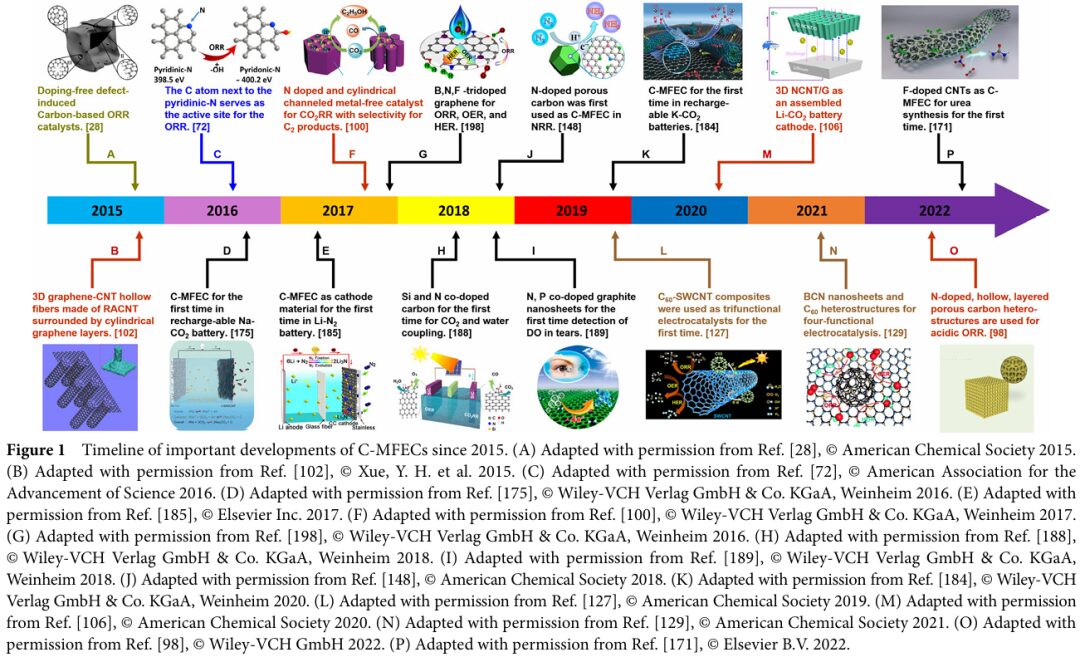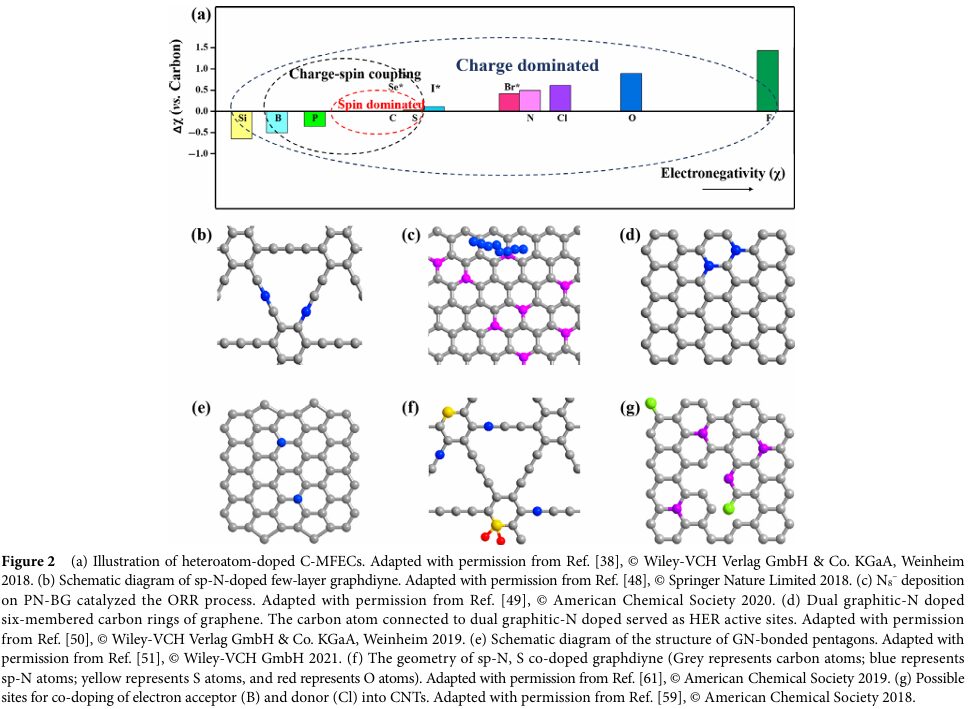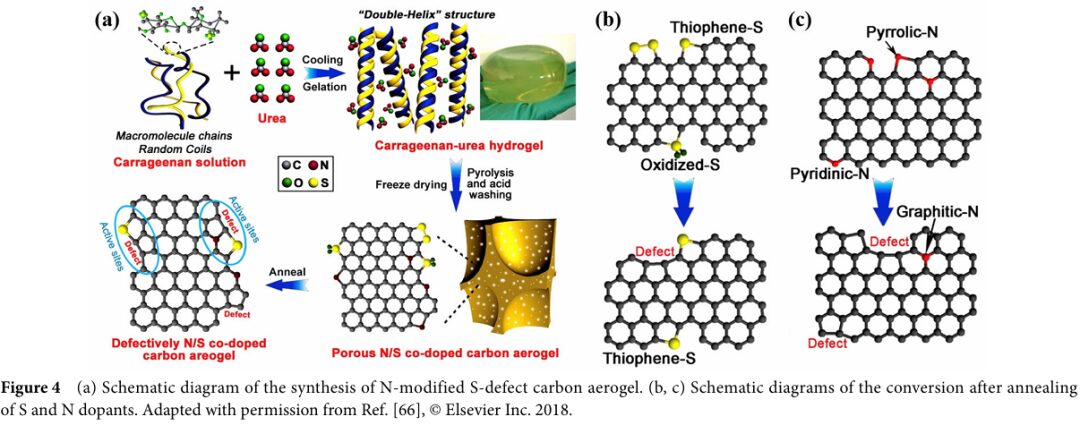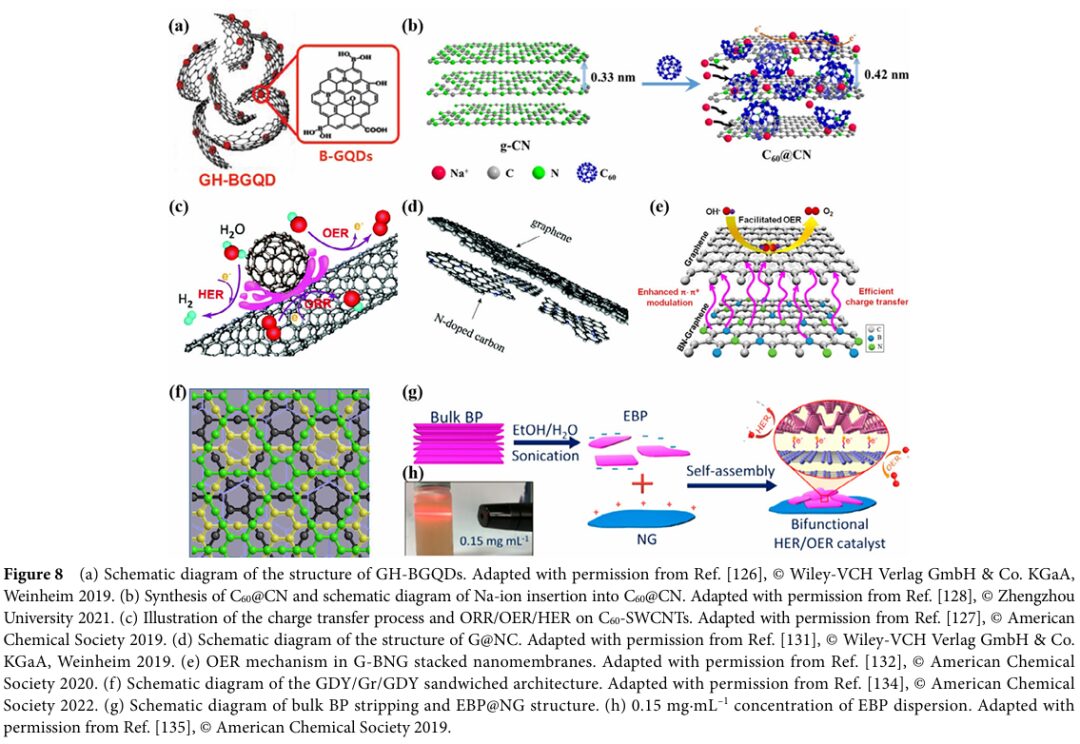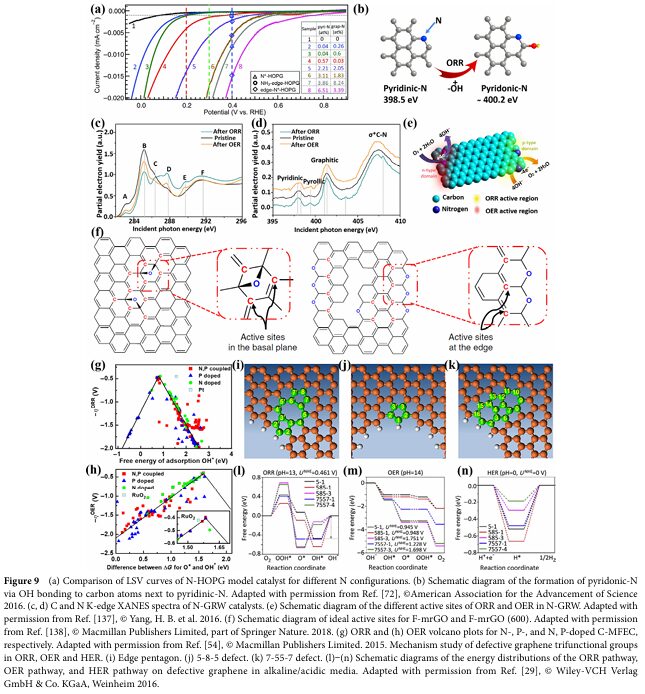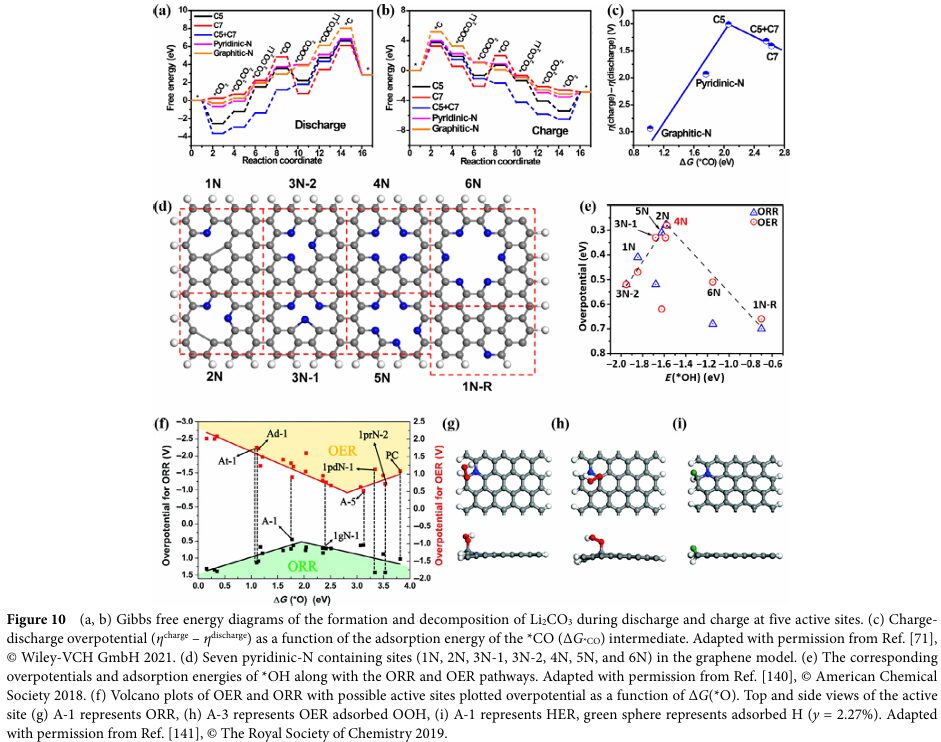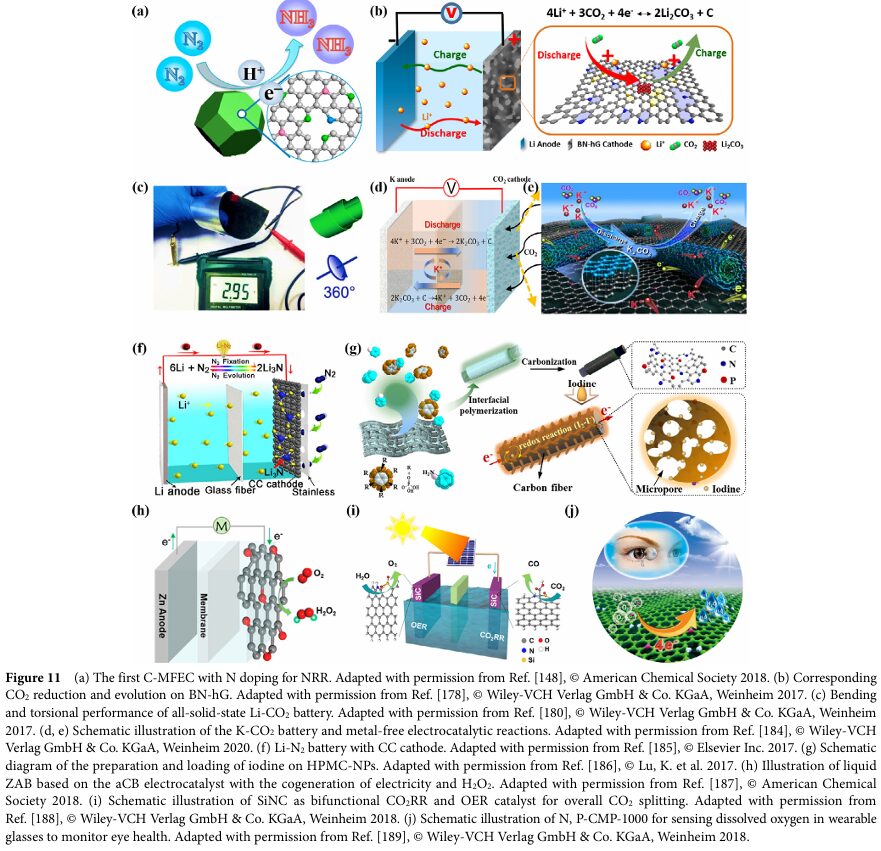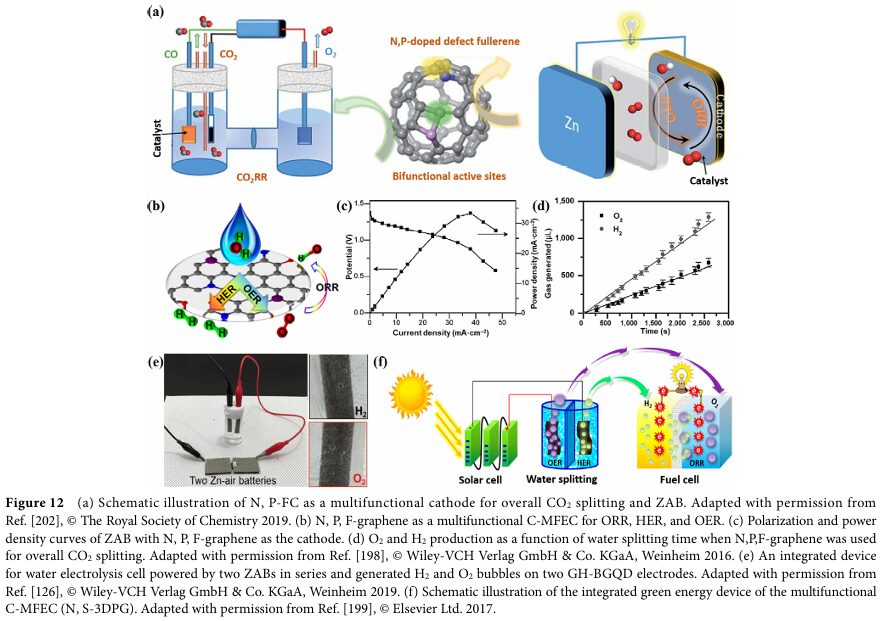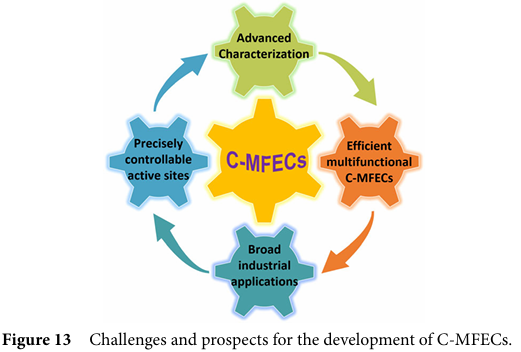Skip to content
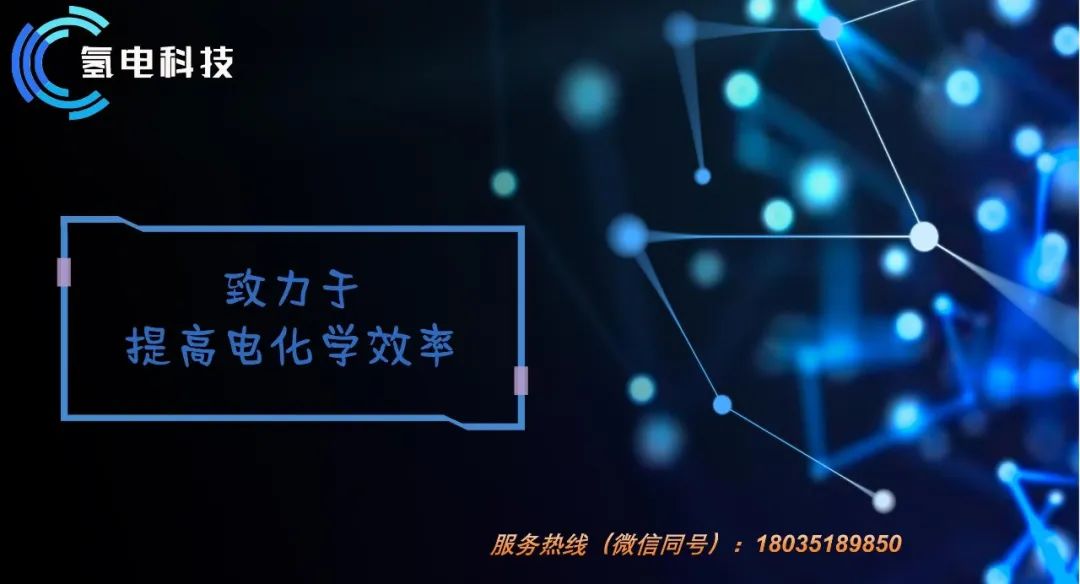 Carbon-based non-metallic electrocatalysts (C-MFECs) have made significant progress in research and development, providing potential alternatives to precious metal catalysts for various important reactions in the fields of renewable energy and environmental remediation.
This timely and critical review summarizes the groundbreaking advances of C-MFECs in various aspects over the past five years, including the design and regulation of intrinsic catalytic active sites, the design and synthesis of carbon composites and hybrid carbon catalysts, mechanistic understanding, and their potential applications in clean energy storage and energy/chemical conversion.
This article also discusses the current challenges and future opportunities facing the field of non-metallic carbon electrocatalysis, aiming to provide forward-looking opportunities for various catalytic processes that are of significant importance in practical applications.
Carbon-based non-metallic electrocatalysts (C-MFECs) have made significant progress in research and development, providing potential alternatives to precious metal catalysts for various important reactions in the fields of renewable energy and environmental remediation.
This timely and critical review summarizes the groundbreaking advances of C-MFECs in various aspects over the past five years, including the design and regulation of intrinsic catalytic active sites, the design and synthesis of carbon composites and hybrid carbon catalysts, mechanistic understanding, and their potential applications in clean energy storage and energy/chemical conversion.
This article also discusses the current challenges and future opportunities facing the field of non-metallic carbon electrocatalysis, aiming to provide forward-looking opportunities for various catalytic processes that are of significant importance in practical applications.
01 Background and Objectives
Background Introduction: Carbon-based metal-free electrocatalysts (C-MFECs) provide potential alternatives to precious metal catalysts and are crucial for renewable energy and environmental remediation. Significant breakthroughs have been achieved in this field over the past five years.
Research Objectives: To provide a comprehensive overview of C-MFECs in the design and regulation of intrinsic catalytic active sites, the synthesis of carbon composites and hybrid carbon catalysts, mechanistic understanding, and potential applications. Discuss current challenges and future opportunities to provide forward-looking opportunities for practical applications.
02 Research Methods
Literature Review:
Review and analyze recent research literature on C-MFECs, including experimental design, theoretical calculations, and practical application cases.
Summarize key technologies and methods, as well as their roles in enhancing catalyst performance.
03 Research Results
Structural Design
Introduce the structural design principles of C-MFECs, including the intrinsic regulation of active sites and the optimized composition of composite catalysts.
Demonstrate how to improve the stability and activity of catalysts through structural design.
Potential Applications
Explore the application potential of C-MFECs in clean energy storage (such as batteries and supercapacitors) and energy/chemical conversion (such as water splitting and carbon dioxide reduction).
Introduce several practical application cases that demonstrate the excellent performance and practicality of C-MFECs..
 04 Illustrated Guide
04 Illustrated Guide
05 Research Limitations
Performance Bottlenecks: Despite significant progress in performance, C-MFECs still face challenges such as low active site density and insufficient stability. Further research and optimization are needed to overcome these limitations.
06 Future Research Directions
Technological Innovation
Explore new synthesis methods and structural design strategies to enhance the active site density and stability of C-MFECs.
Research new carbon materials and composites to expand the application range of C-MFECs.
Mechanistic Research
In-depth exploration of the catalytic mechanisms of C-MFECs to provide theoretical guidance for catalyst design and performance optimization.
Conduct multi-scale simulations and experimental studies to reveal the dynamic behavior and interaction mechanisms of catalysts during reaction processes.
07 Summary
-
Carbon-based electrocatalysts exhibit great potential in clean energy storage and energy/chemical conversion.
-
Through structural design and performance optimization, the performance of C-MFECs has significantly improved, but challenges remain.
-
Future research should focus on technological innovation and mechanistic studies to promote the further development of C-MFECs in practical applications.
This article is provided by the Hydrogen Energy Research Assistant.
https://doi.org/10.26599/NRE.2023.9120047
▲ Disc Electrode Spin Coater
 Carbon-based non-metallic electrocatalysts (C-MFECs) have made significant progress in research and development, providing potential alternatives to precious metal catalysts for various important reactions in the fields of renewable energy and environmental remediation.
Carbon-based non-metallic electrocatalysts (C-MFECs) have made significant progress in research and development, providing potential alternatives to precious metal catalysts for various important reactions in the fields of renewable energy and environmental remediation.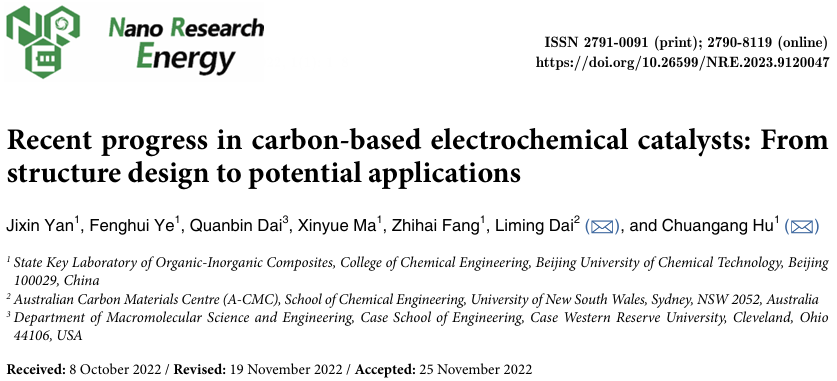
 04 Illustrated Guide
04 Illustrated Guide